Communication is key to any tactical shooter—and VALORANT is no exception. Knowing every map’s callouts can sometimes be the difference between winning and losing a round.
Learning every callout in VALORANT might sound like a tall task if you’re new to the game, but if you’re open to playing all the maps, you’ll learn all the important spots in no time.
VALORANT’s latest map, Abyss, entered the active pool with Episode Nine going live on June 25. While there are a total of 11 maps in the game, only seven are in the competitive map rotation. Riot Games introduces map pool and layout changes every few Acts to keep the meta fresh, removing the old maps from rotation.
Here’s every callout for all 11 maps in VALORANT.
All VALORANT maps and callouts
Abyss
Abyss is VALORANT’s first map with no boundaries, meaning you can fall off the edges from several areas in mid and around the sites. It’s a large map; you must know several crucial callouts to defend and attack comfortably. The defenders often sit in B tower and behind the two boxes at B, with the attackers looking to find an entry through B main and B nest.
Leading up to the A site, you’ll find defenders in A tower and A security (next to the defenders’ spawn). Unlike the other site where you can gain access through B danger, attackers can only enter the A site through the main unless you take the longer route through the mid-Catwalk vent.
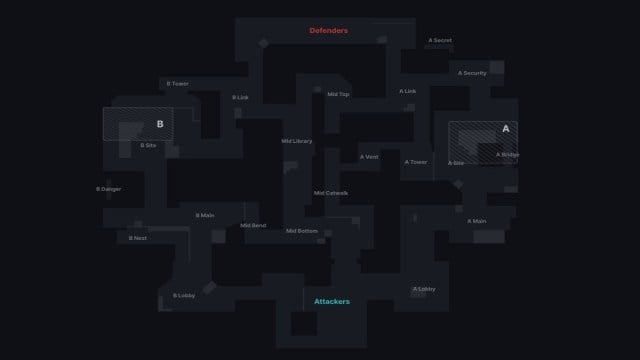
Ascent
Ascent is akin to Counter-Strike’s de_Dust 2. It has a simple layout with a midsection, an A, and a B site. But what makes it stand out are its chokepoints and its alcoves. A few callouts to take into consideration include Catwalk, A, and B lobby. It’s a defense-heavy map that requires coordination from both sides.

Bind
The attackers have several options when it comes to Bind. A few of the more common callouts and chokepoints on the map include Hookah, a room full of hanging water pipes leading up to the B site, and Showers, a bathroom area toward A.

Breeze
Breeze is VALORANT’s largest map. It has wide-open spaces and long sightlines, similar to maps you might find in Counter-Strike. Leading up to the A site are Cave and Shop, but there’s also Bridge, Mid Wood Doors, and Switch to take into consideration. Around the B site, there’s Main, Arches, Elbow, and Tunnel.
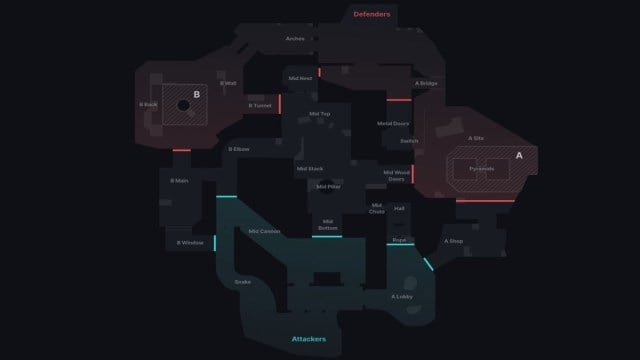
Fracture
Fracture is one of VALORANT’s most unique maps—for better or worse. The defenders spawn in the middle of the H-shaped map with access to both sites, while the attackers spawn directly in front of a zipline. This zipline, which runs beneath the map, allows players to reach the northern and southern points of the map before the round starts. A few important callouts include A and B, B Tower, A Deep, and A Link.

Icebox
Icebox is a small and confined snow-covered map with two sites. There are tight angles and choke points, long sightlines, numerous elevated positions, and horizontal zip lines. It’s the perfect map for aerial agents like Jett and Raze, rewarding adaptive play and quick aim. Shipping Containers and Rafters are just a few callouts to be aware of.

Haven
Haven is a three-site map with many options when it comes to attacking and defending. The middle of the map has two especially important callouts. There’s T Mid Doors, which leads up to Garage and the C site, and there’s Mid Courtyard, which can be found directly in front of B. There’s also Mid-Windows, which is a common spot for attackers, and B-box, where the defenders lie in wait.

Lotus
Lotus is set in the Western Ghats of Omega Earth’s India. It’s a three-site map, similar to Haven, and has rotating doors, destructible walls, and a silent drop. Inspired by Indiana Jones, this map has several notable callouts pictured below.

Pearl
Pearl is deceptively simpler than many of the other maps in the game. Leaving out gimmicks like closable doors, ascenders, teleporters, and ziplines, the map goes back to basics. A few important callouts include Secret, Flowers, and Link toward the A site, and Screen, Hall, and Tower around the B site. There are also Mid Connector and Mid Doors to take into account.

Split
Split is another defense-sided map with little to no room for error on the attacking side. B and A main are two of the map’s crucial callouts, but Mid and Sewers are also highly contentious. The defenders will often sit on B Rafters, otherwise known as Heaven, or the back of A. But there are plenty of options and the defenders have the pick of the litter.
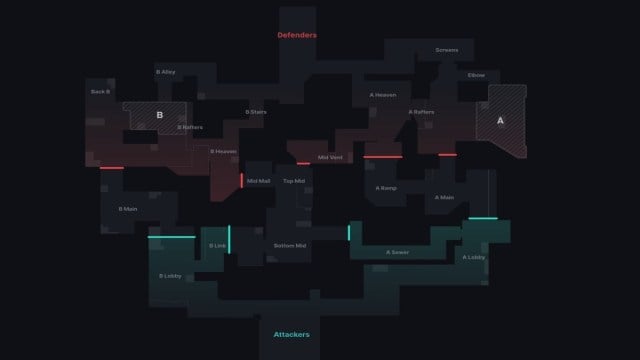
Sunset
Sunset, a two-site map, has a layout similar to Ascent’s. But it provides extra opportunities to catch opponents off guard by taking control of the more open mid-area, called the Courtyard. You can attack the A site through A main and A elbow, with the enemy team defending on three primary spots—A link, A alley (also referred to as the defender spawn), and the big box in the back of the site.
On the other hand, you can lead up to the B site through the B main or the mid door (which has a switch in the market). You’ll find the defenders sitting in the market or taking cover behind the site as both the entrances are easy to defend passively, especially with a Sentinel like Cypher or Killjoy.
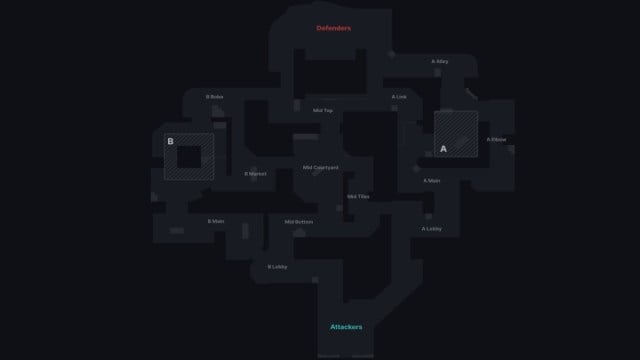



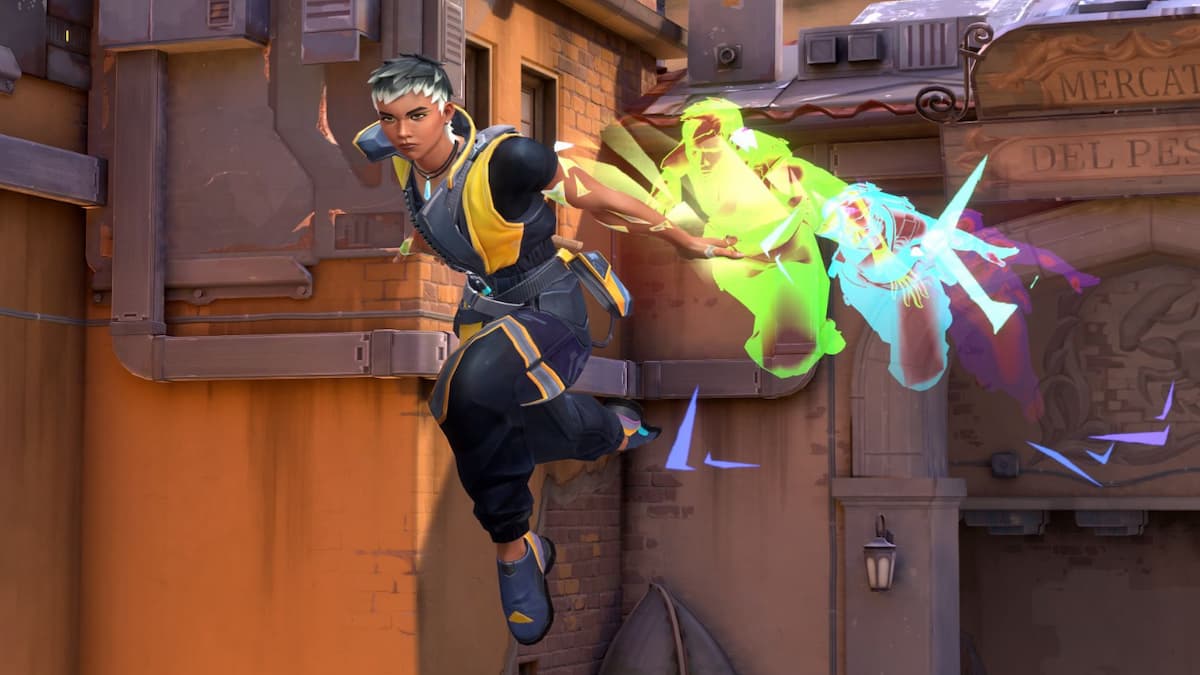

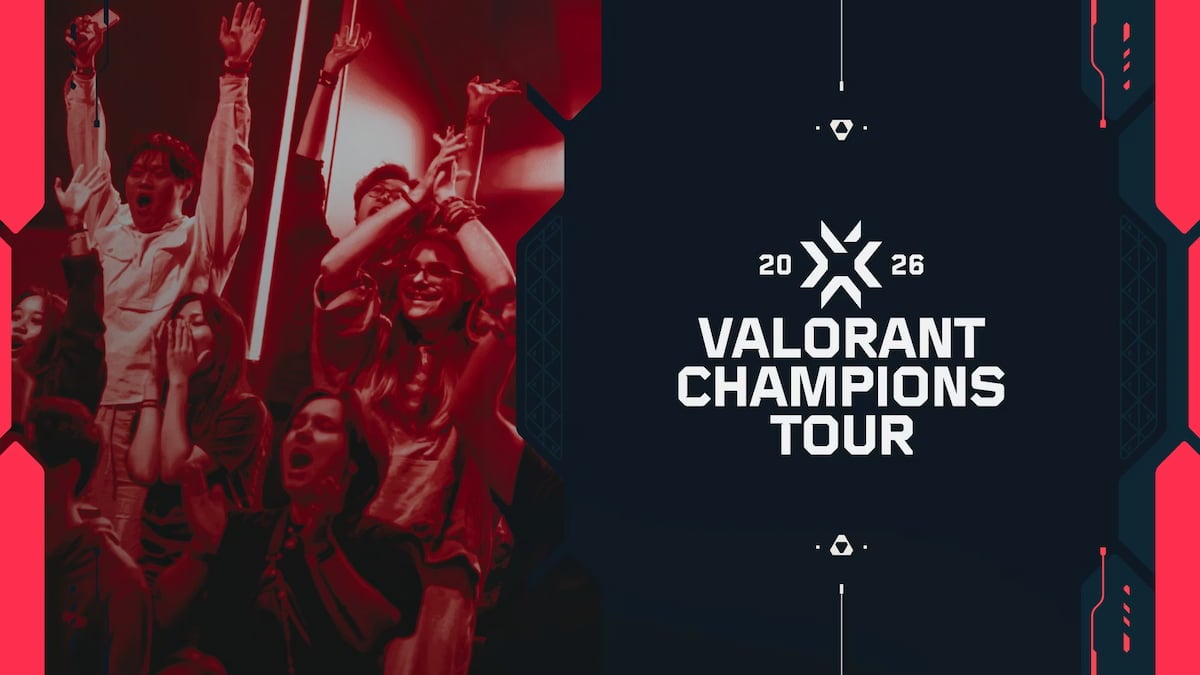
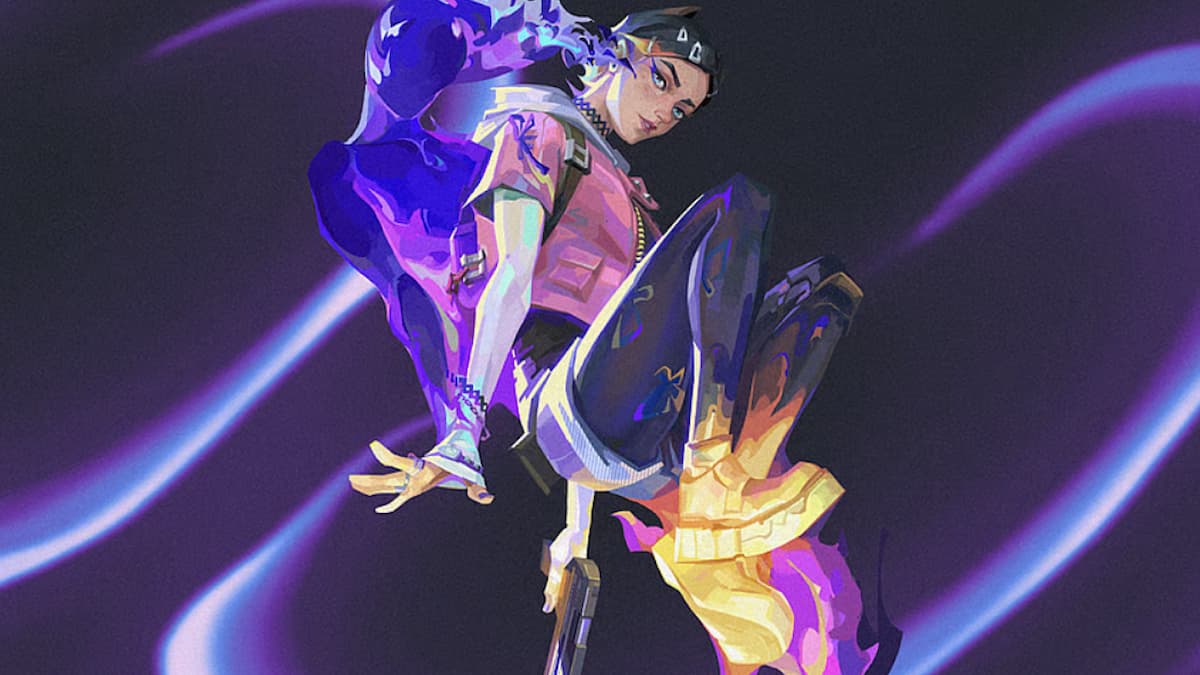






Published: Jul 1, 2024 12:50 am